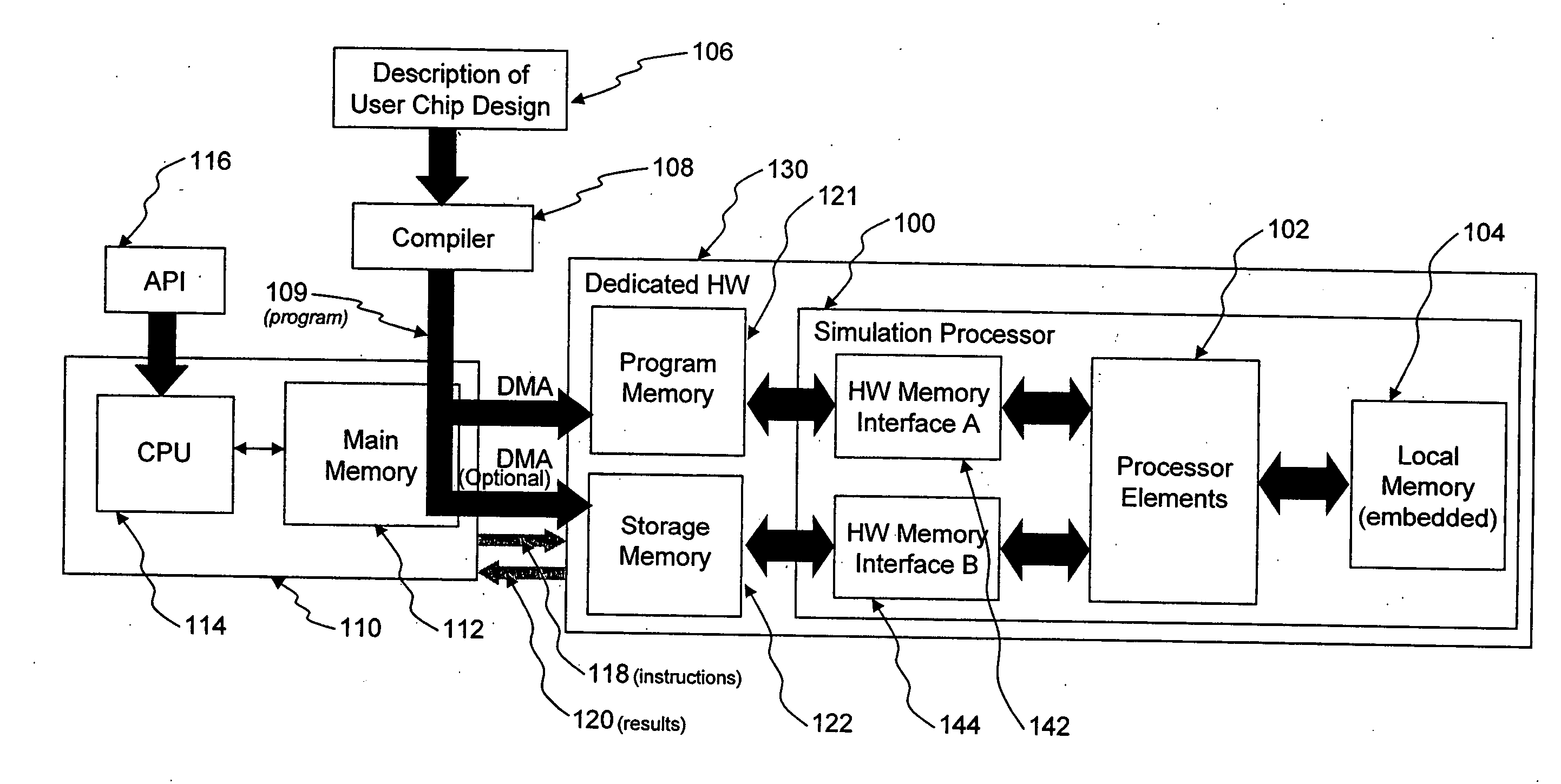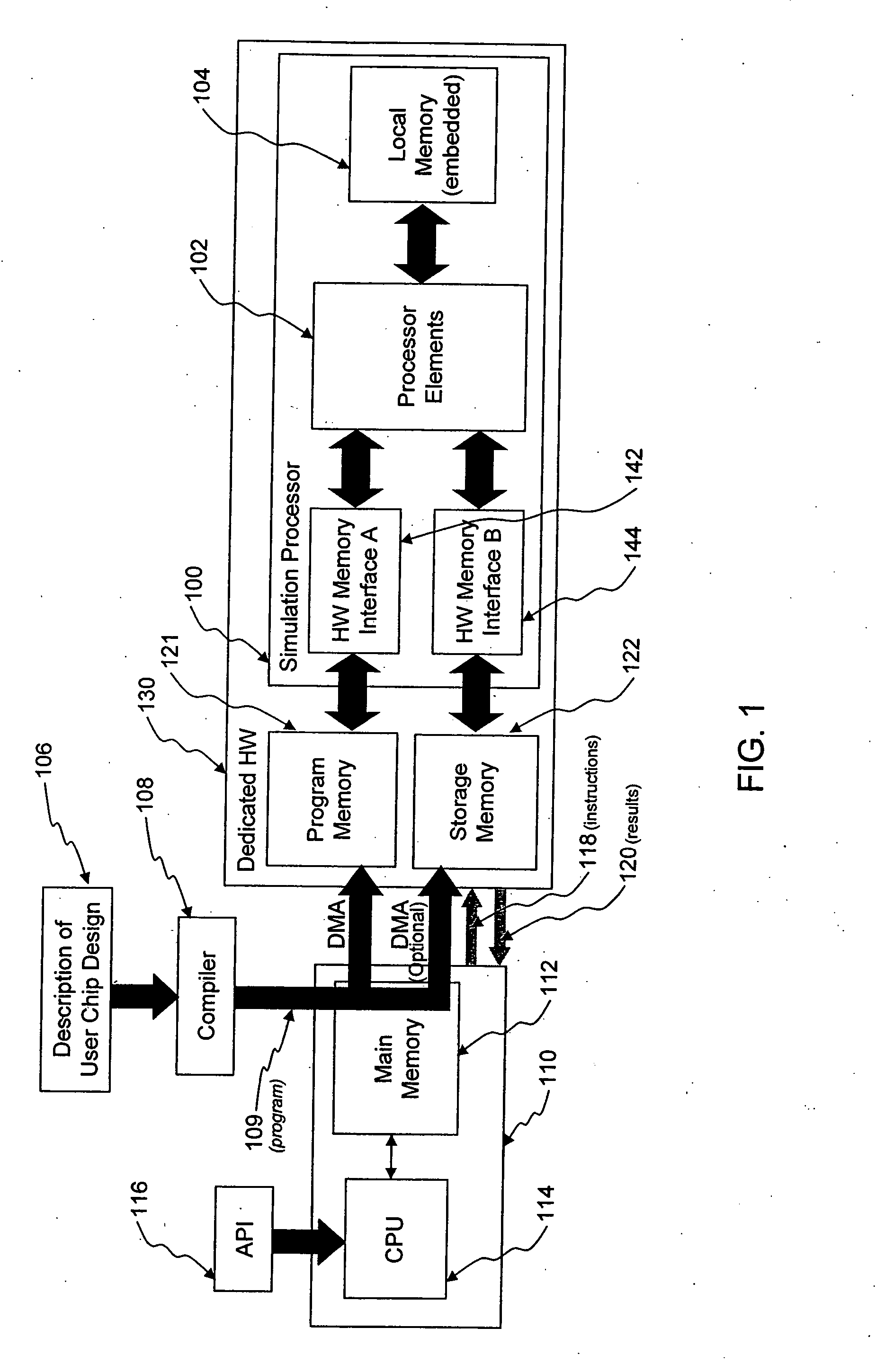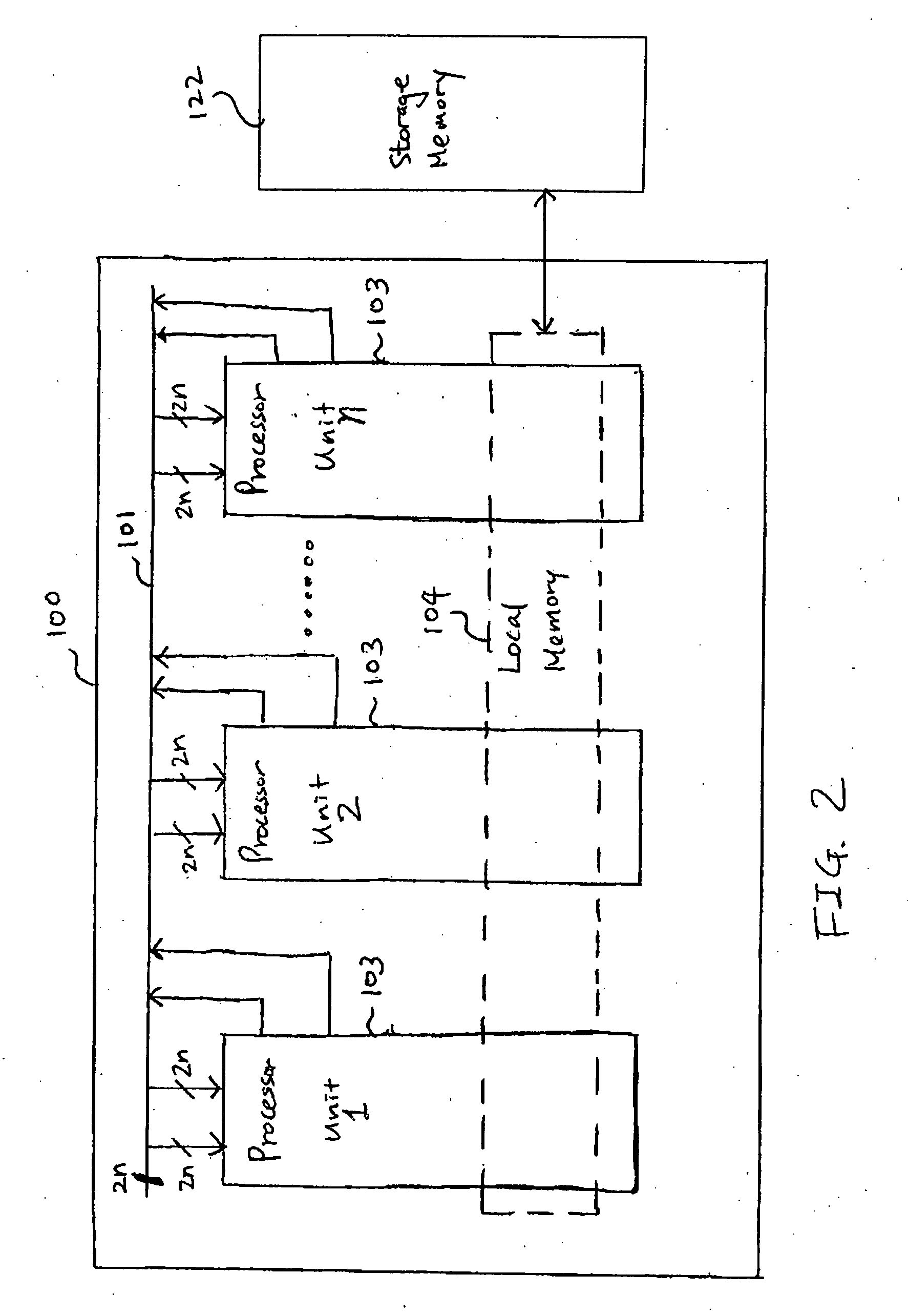Hardware acceleration system for simulation of logic and memory
a technology of logic and memory, applied in the field of virtual machine, can solve the problems of high processing speed and a large number of execution steps, high speed of operation, and the typical slowness of software simulators, and achieve the effect of increasing the speed of simulation
- Summary
- Abstract
- Description
- Claims
- Application Information
AI Technical Summary
Benefits of technology
Problems solved by technology
Method used
Image
Examples
Embodiment Construction
[0029]FIG. 1 is a block diagram illustrating a hardware accelerated logic simulation system according to one embodiment of the present invention. The logic simulation system includes a dedicated hardware (HW) simulator 130, a compiler 108, and an API (Application Programming Interface) 116. The host computer 110 includes a CPU 114 and a main memory 112. The API 116 is a software interface by which the host computer 110 controls the hardware simulator 130. The dedicated HW simulator 130 includes a program memory 121, a storage memory 122, and a simulation processor 100 that includes the following: processor elements 102, an embedded local memory 104, a hardware (HW) memory interface A 142, and a hardware (HW) memory interface B 144.
[0030] The system shown in FIG. 1 operates as follows. The compiler 108 receives a description 106 of a user chip or design, for example, an RTL (Register Transfer Language) description or a netlist description of the design. The description 106 typically...
PUM
 Login to View More
Login to View More Abstract
Description
Claims
Application Information
 Login to View More
Login to View More - R&D
- Intellectual Property
- Life Sciences
- Materials
- Tech Scout
- Unparalleled Data Quality
- Higher Quality Content
- 60% Fewer Hallucinations
Browse by: Latest US Patents, China's latest patents, Technical Efficacy Thesaurus, Application Domain, Technology Topic, Popular Technical Reports.
© 2025 PatSnap. All rights reserved.Legal|Privacy policy|Modern Slavery Act Transparency Statement|Sitemap|About US| Contact US: help@patsnap.com



